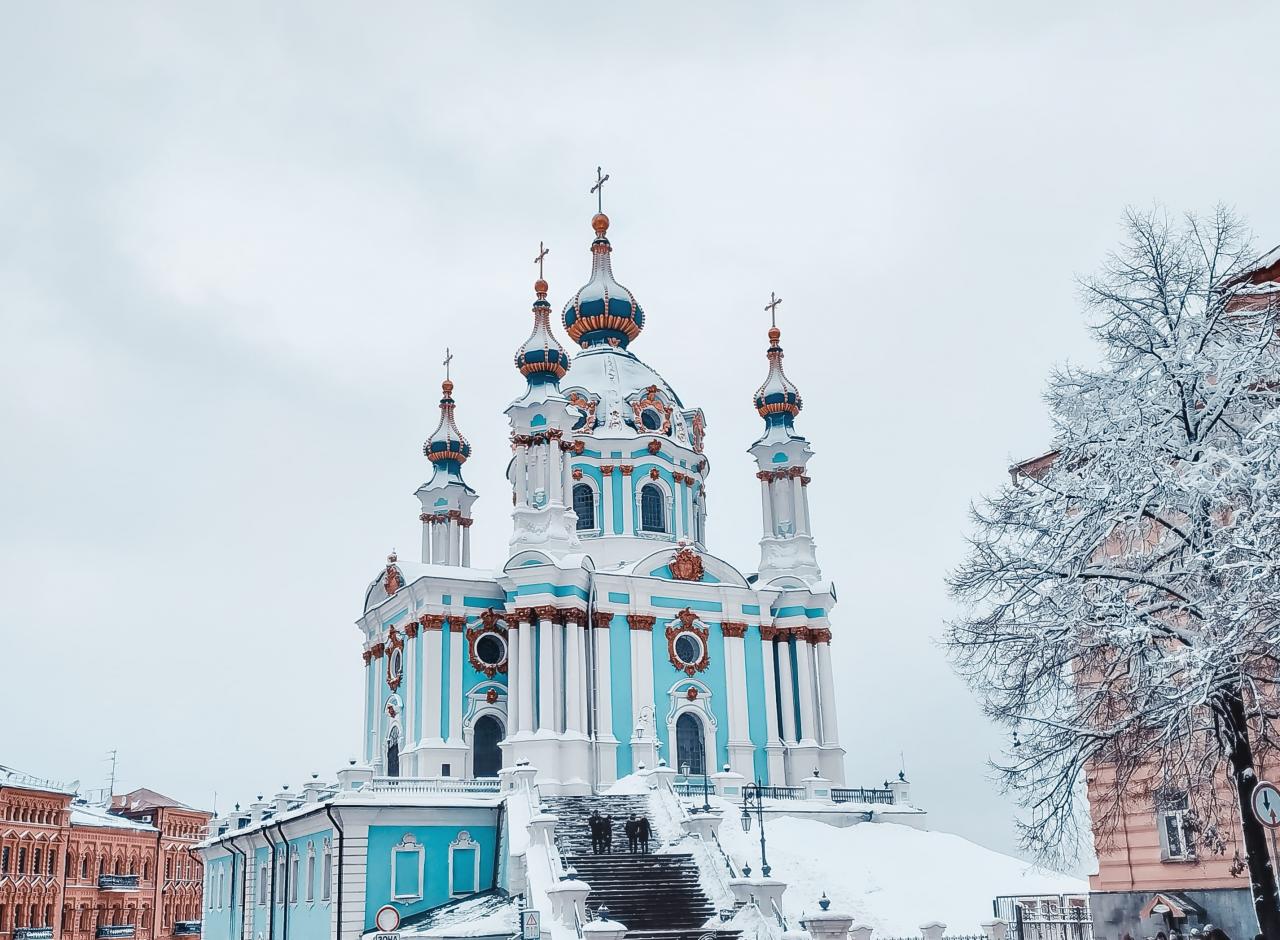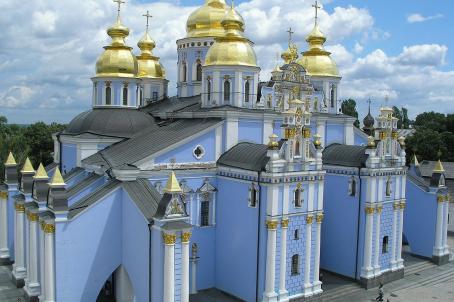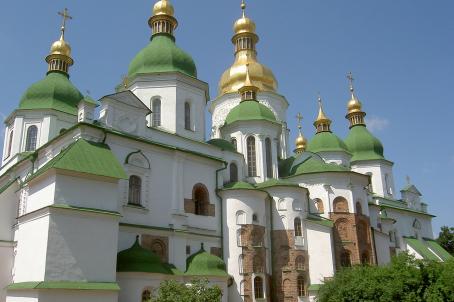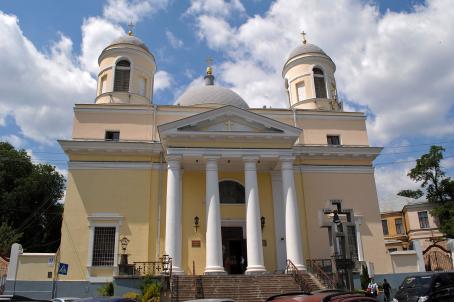St Andrew's Church
According to the legend, the foundation stone of St. Andrew's Church was laid by the apostle Andrew (1st century). In 1112, Prince Mstislav I had the wooden church of the Exaltation of the Cross built here, which stood until 1560. After that, the site remained empty and served as a rampart for the nearby fortress. Empress Elisabeth of Russia (1741-1762), during her visit to Kyiv in 1744, ordered the construction of a court church on the site of the cross in honour of the Apostle Andrew, who was also the patron saint of the Tsarist Empire. After its consecration in 1767, the church was renovated several times, but no significant changes were made. Because of its lightness and plasticity, the church is called a "flying church". Its artistic expression and originality make St Andrew's Church one of the masterpieces of Ukrainian architecture of the 18th century.






